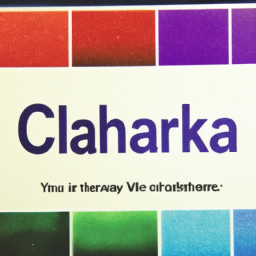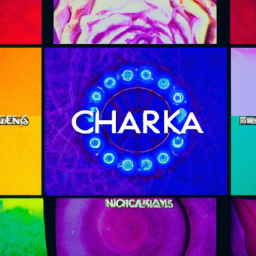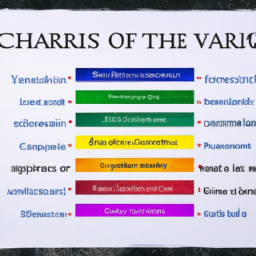Chakras, also known as energy centers, are considered to be the vital energy points in our bodies according to ancient Hindu and Buddhist practices. The term ‘chakra’ comes from Sanskrit, meaning ‘wheel’ or ‘circle’. These chakras are believed to be interconnected and responsible for the flow of energy throughout our body, influencing our physical, emotional, and spiritual well-being.
There are seven main chakras located along the spine, starting from the base of the spine to the crown of the head. Each chakra is represented by a different color and has its unique characteristics and functions. Understanding the role of these energy centers can help us achieve balance and harmony in our mind, body, and soul.
1. Root Chakra (Muladhara)
Located at the base of the spine, the root chakra is associated with the color red. It represents our foundation, stability, and feeling grounded. This chakra is responsible for our basic survival needs, such as food, shelter, and safety. A balanced root chakra can give us a sense of security and stability, while an imbalance can result in fear, anxiety, and restlessness.
2. Sacral Chakra (Swadhisthana)
Situated just below the navel, the sacral chakra is associated with the color orange. It is linked to our emotions, creativity, and sexuality. A balanced sacral chakra can help us express our emotions freely and embrace our sensuality, while an imbalance can lead to feelings of guilt, low self-esteem, and creativity blocks.
3. Solar Plexus Chakra (Manipura)
The solar plexus chakra, located in the upper abdomen, is represented by the color yellow. This chakra is responsible for our self-esteem, confidence, and personal power. A balanced solar plexus chakra can give us the strength to overcome challenges and achieve our goals, while an imbalance can manifest as low self-esteem, lack of confidence, and control issues.
4. Heart Chakra (Anahata)
The heart chakra, situated in the center of the chest, is associated with the color green. It represents love, compassion, and forgiveness. A balanced heart chakra can help us develop healthy relationships and connect with others on a deeper level. An imbalance can result in feelings of loneliness, anger, and resentment.
5. Throat Chakra (Vishuddha)
The throat chakra, located at the base of the throat, is represented by the color blue. It is linked to our communication and self-expression. A balanced throat chakra can help us speak our truth and express ourselves confidently, while an imbalance can lead to difficulties in communicating and fear of speaking up.
6. Third Eye Chakra (Ajna)
Also known as the brow chakra, this energy center is situated between the eyebrows and is associated with the color indigo. It represents our intuition, self-awareness, and perception. A balanced third eye chakra can help us trust our instincts and see the bigger picture, while an imbalance can result in feelings of confusion, lack of clarity, and being disconnected from our intuition.
7. Crown Chakra (Sahasrara)
Last but not least, the crown chakra is located at the top of the head and is represented by the color violet or white. It is considered the highest chakra and represents our connection to the divine and universal consciousness. A balanced crown chakra can lead to feelings of spiritual enlightenment and a sense of oneness, while an imbalance can result in feelings of disconnection and detachment from the world.
It is believed that when these chakras are balanced and aligned, our energy flows freely, and we experience physical, emotional, and spiritual well-being. However, various factors such as stress, trauma, and negative thoughts can cause blockages or imbalances in our chakras, leading to physical and emotional ailments.
There are several practices such as yoga, meditation, Reiki, and acupuncture that can help balance and align our chakras. These practices can help clear any blockages and restore the healthy flow of energy in our body. It is also essential to maintain a healthy lifestyle, including a balanced diet, regular exercise, and managing stress to keep our chakras in harmony.
In conclusion, understanding and working with our chakras can help us achieve balance and harmony in all aspects of our lives. These energy centers are not just a spiritual concept but have a significant impact on our physical and emotional well-being. So, take a moment to tune in to your chakras and give them the attention and care they deserve.





Interesting!
Interesting indeed! Chakras are fascinating energy centers within the body that help to regulate our emotional and spiritual wellbeing.